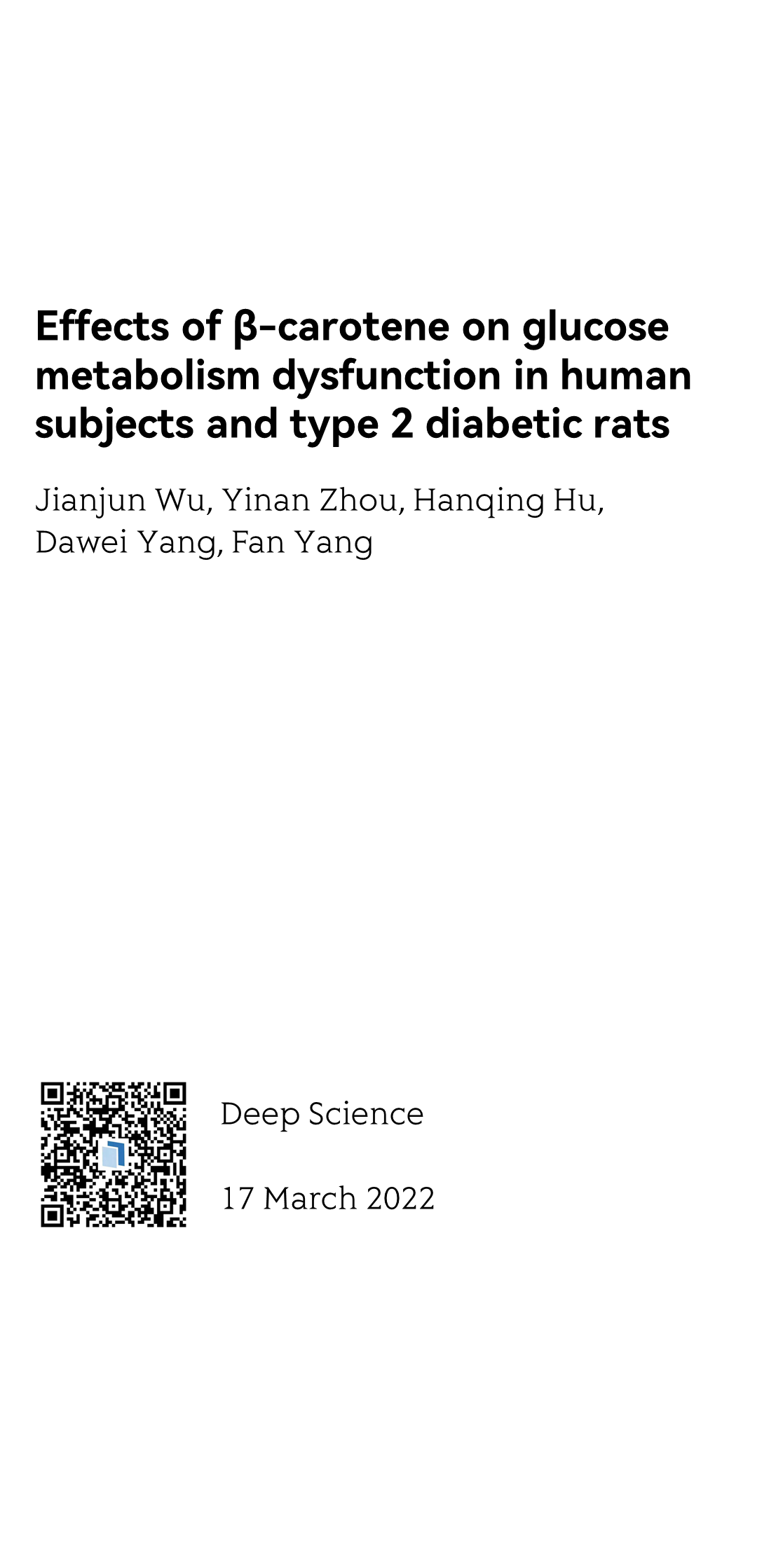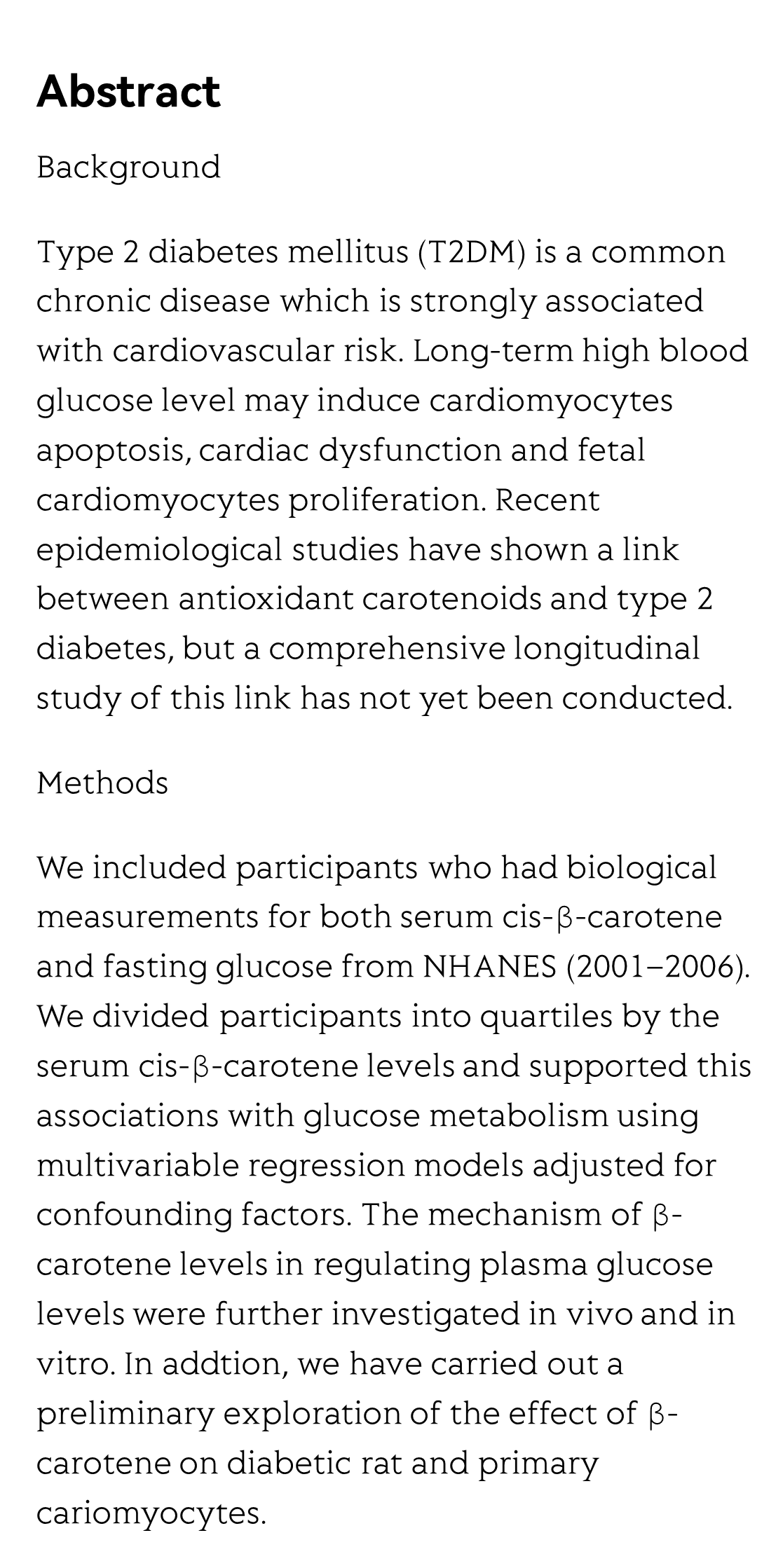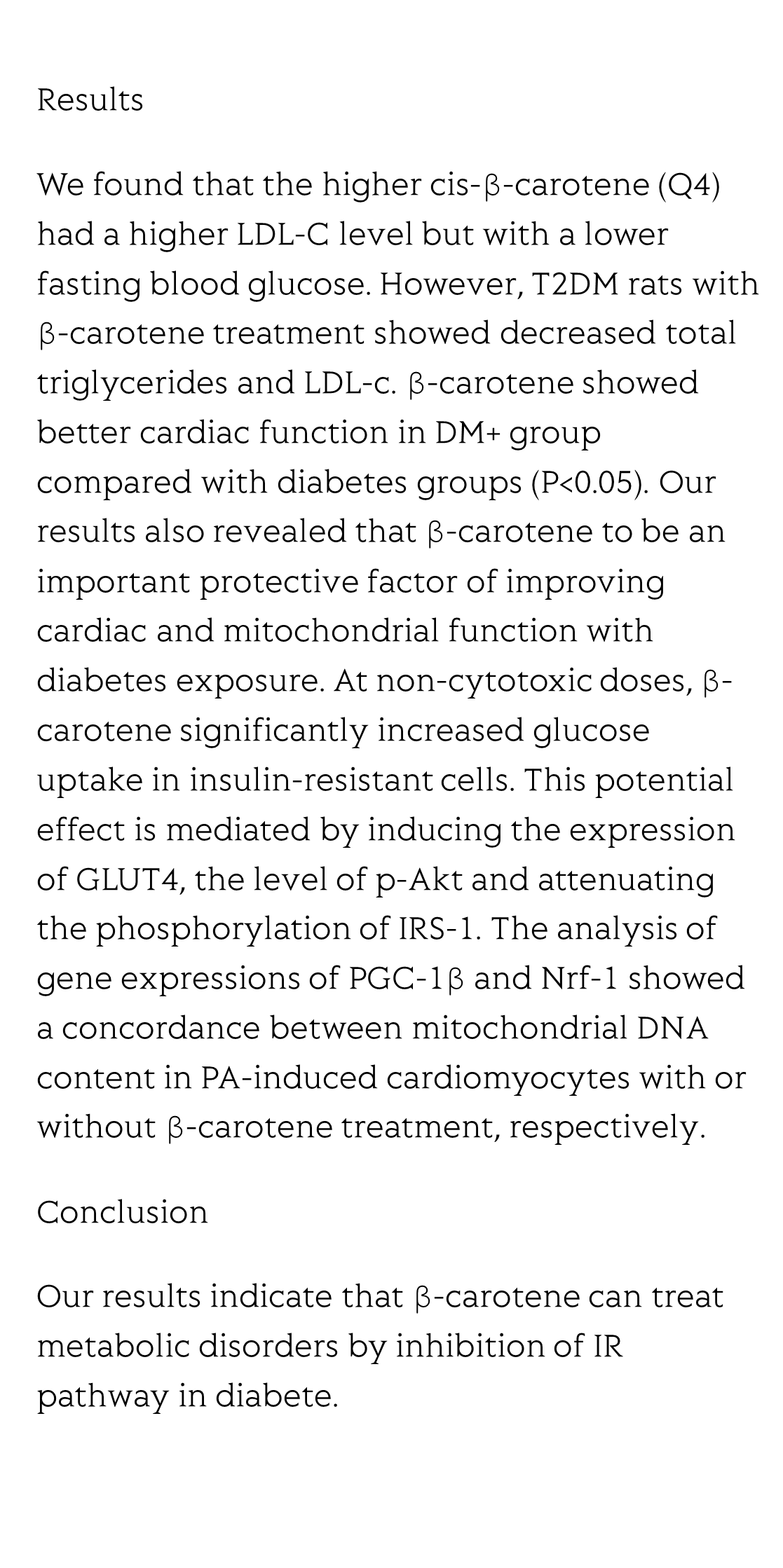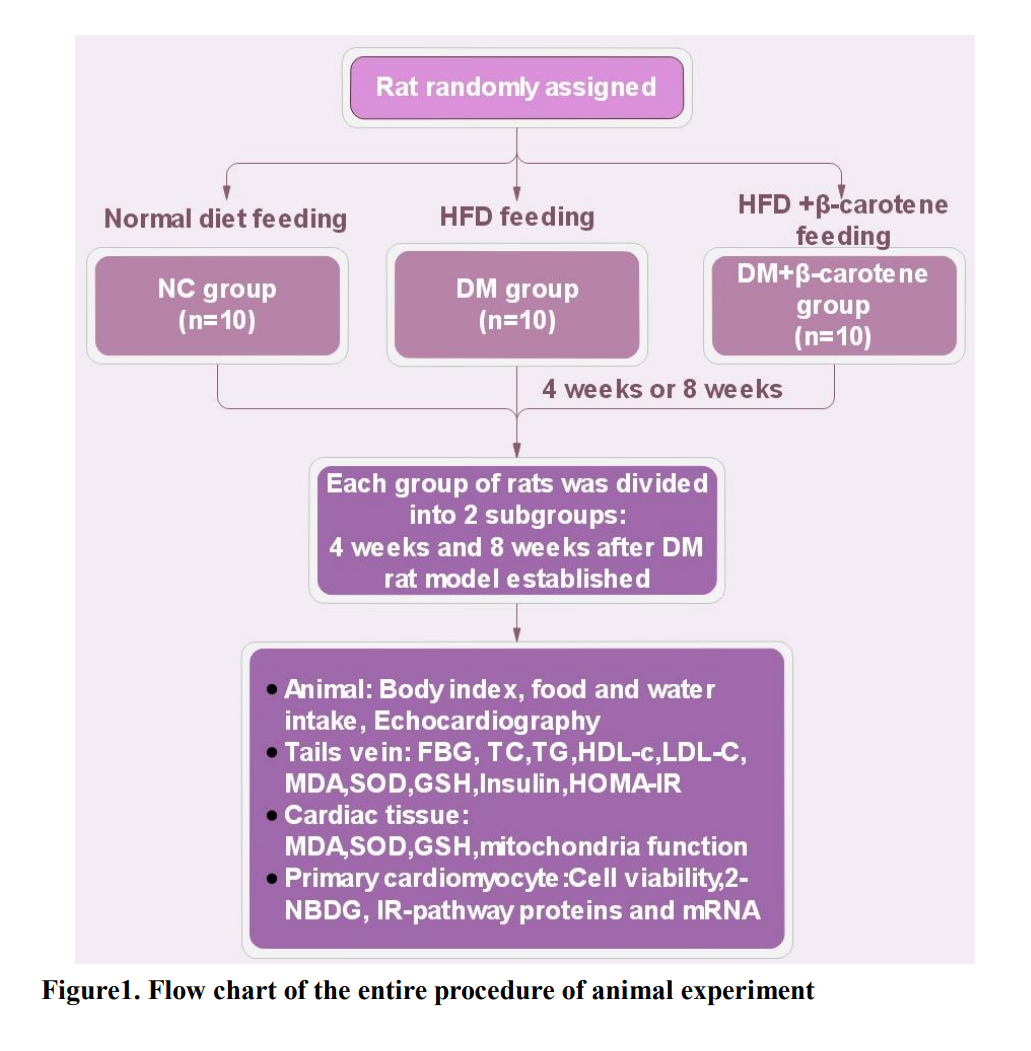(Preprint) Effects of β-carotene on glucose metabolism dysfunction in human subjects and type 2 diabetic rats
Jianjun Wu 吴建军 ¹ ², Yinan Zhou 周一楠 ³, Hanqing Hu ⁴, Dawei Yang 杨大威 ⁵, Fan Yang 杨帆 ¹ ²
¹ Department of Cardiology, The Second Affiliated Hospital of Harbin Medical University, Harbin150001, China
中国 哈尔滨 哈尔滨医科大学第二附属医院心内科
² Key Laboratory of Myocardial Ischemia, Ministry of Education, Harbin Medical University, Harbin 150001, China
中国 哈尔滨 哈尔滨医科大学心肌缺血教育部重点实验室
³ Department of Digestive internal medicine, The First Affiliated Hospital of Harbin Medical University, Harbin150001, China
中国 哈尔滨 哈尔滨医科大学附属第一医院消化内科
⁴ Department of Oncology Surgery, The Second Affiliated Hospital of Harbin Medical University, Harbin150001, China
中国 哈尔滨 哈尔滨医科大学附属第二医院肿瘤外科
⁵ Department of Orthopedics, The Fourth Affiliated Hospital of Harbin Medical University, Harbin150001, China
中国 哈尔滨 哈尔滨医科大学第四附属医院骨科
Deep Science
, 2022-03-17
Abstract
Background
Type 2 diabetes mellitus (T2DM) is a common chronic disease which is strongly associated with cardiovascular risk. Long-term high blood glucose level may induce cardiomyocytes apoptosis, cardiac dysfunction and fetal cardiomyocytes proliferation. Recent epidemiological studies have shown a link between antioxidant carotenoids and type 2 diabetes, but a comprehensive longitudinal study of this link has not yet been conducted.
Methods
We included participants who had biological measurements for both serum cis-β-carotene and fasting glucose from NHANES (2001–2006). We divided participants into quartiles by the serum cis-β-carotene levels and supported this associations with glucose metabolism using multivariable regression models adjusted for confounding factors. The mechanism of β-carotene levels in regulating plasma glucose levels were further investigated in vivo and in vitro. In addtion, we have carried out a preliminary exploration of the effect of β-carotene on diabetic rat and primary cariomyocytes.
Results
We found that the higher cis-β-carotene (Q4) had a higher LDL-C level but with a lower fasting blood glucose. However, T2DM rats with β-carotene treatment showed decreased total triglycerides and LDL-c. β-carotene showed better cardiac function in DM+ group compared with diabetes groups (P<0.05). Our results also revealed that β-carotene to be an important protective factor of improving cardiac and mitochondrial function with diabetes exposure. At non-cytotoxic doses, β-carotene significantly increased glucose uptake in insulin-resistant cells. This potential effect is mediated by inducing the expression of GLUT4, the level of p-Akt and attenuating the phosphorylation of IRS-1. The analysis of gene expressions of PGC-1β and Nrf-1 showed a concordance between mitochondrial DNA content in PA-induced cardiomyocytes with or without β-carotene treatment, respectively.
Conclusion
Our results indicate that β-carotene can treat metabolic disorders by inhibition of IR
pathway in diabete.
Flicker minimization in power-saving displays enabled by measurement of difference in flexoelectric coefficients and displacement-current in positive dielectric anisotropy liquid crystals
Junho Jung, HaYoung Jung, GyuRi Choi, HanByeol Park, Sun-Mi Park, Ki-Sun Kwon, Heui-Seok Jin, Dong-Jin Lee, Hoon Jeong, JeongKi Park, Byeong Koo Kim, Seung Hee Lee, MinSu Kim
Opto-Electronic Advances
2025-09-25
Dual-frequency angular-multiplexed fringe projection profilometry with deep learning: breaking hardware limits for ultra-high-speed 3D imaging
Wenwu Chen, Yifan Liu, Shijie Feng, Wei Yin, Jiaming Qian, Yixuan Li, Hang Zhang, Maciej Trusiak, Malgorzata Kujawinska, Qian Chen, Chao Zuo
Opto-Electronic Advances
2025-09-25







